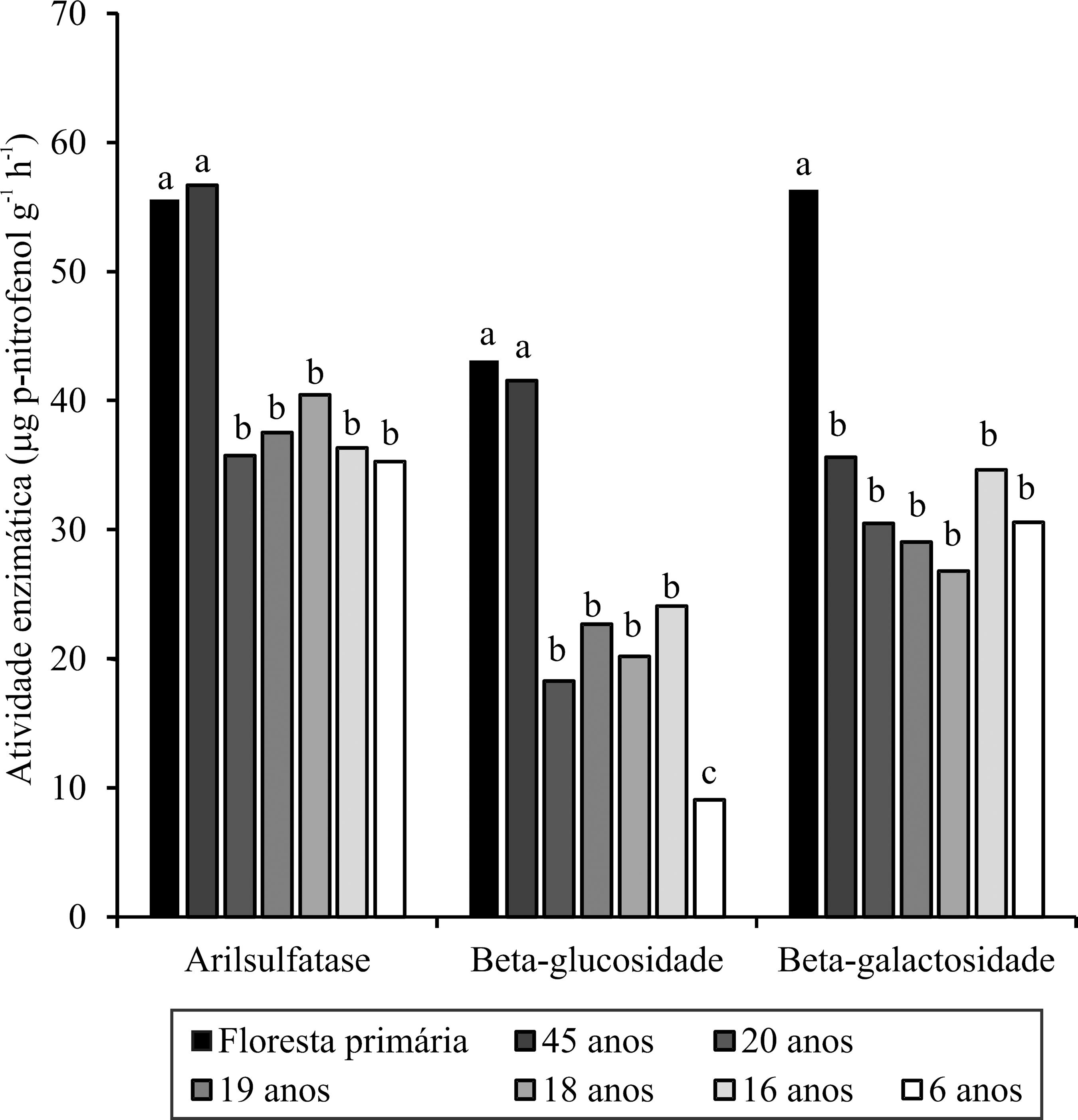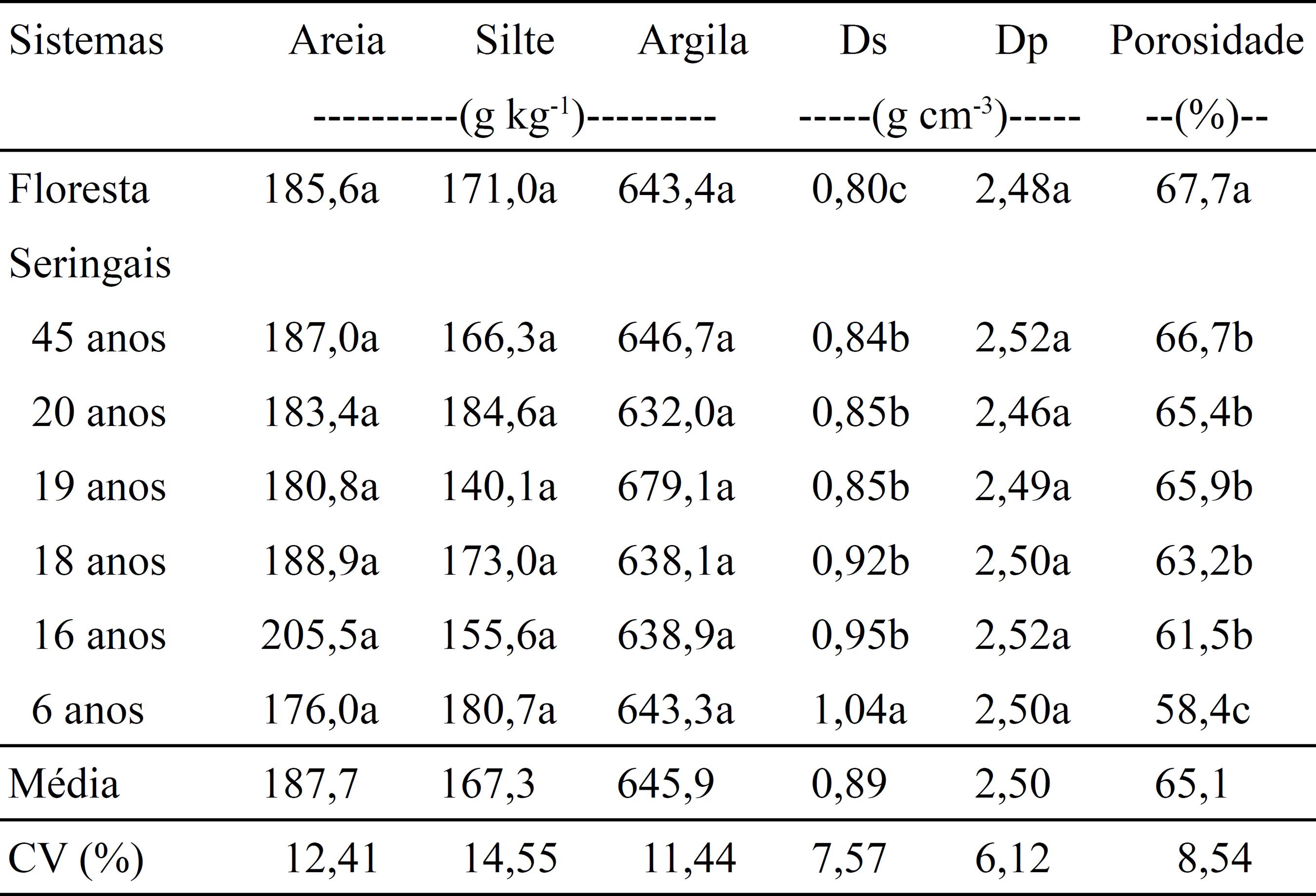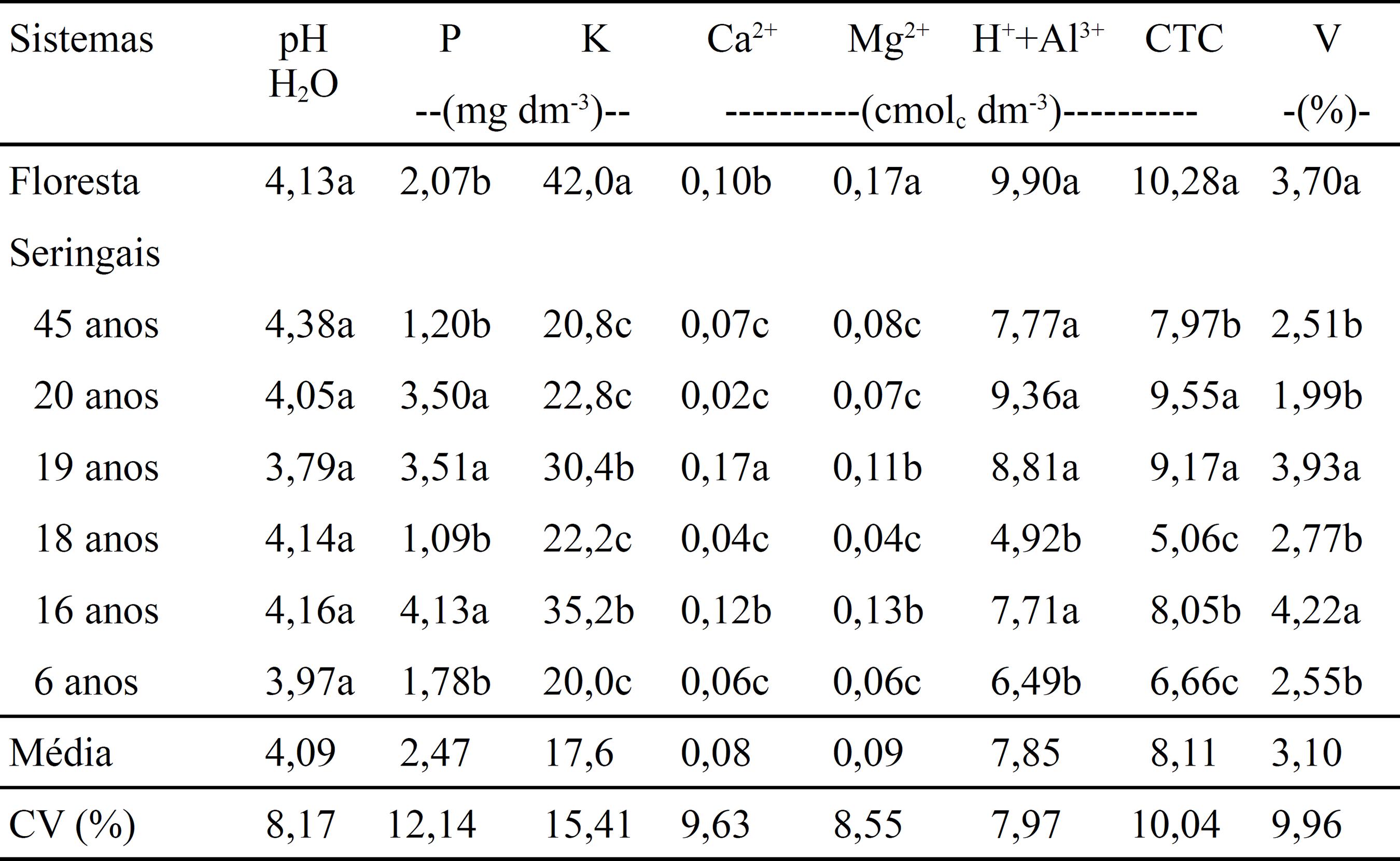Abstract
The objective of this work was to quantify the effects of primary forest conversion into rubber tree plantation (Hevea spp.), concerning the physical, chemical, and microbiological attributes of a Xanthic Oxisol in the Central Amazon. Soil samples were collected at the 0.0-0.1 m depth in areas of the primary forest and of adjacent rubber tree plantations covering an area of 2.0 ha, with plant ages of 6, 16, 18, 19, 20, and 45 years. The reforestation with rubber tree plantation does not minimize the negative effects of the removal of the primary forest, with increased metabolic quotient and reduction of organic carbon, microbial biomass carbon (MBC), microbial biomass nitrogen (MBN), porosity, enzymes (arilsulfatase, β-glucosidase, and β-galactosidase), and humic substances (humic and fulvic acids, and humin) in the soil. MBC and MBN ranged from 291.97 to 615.27 µg g-1 and from 65.76 to 98.58 µg g-1, respectively, and they are the most sensitive attributes to alterations resulting from the replacement of primary forest by rubber tree plantations.
Index terms:
Hevea; microbial biomass carbon; soil enzymes; microbial biomass nitrogen; soil quality; humic substances





